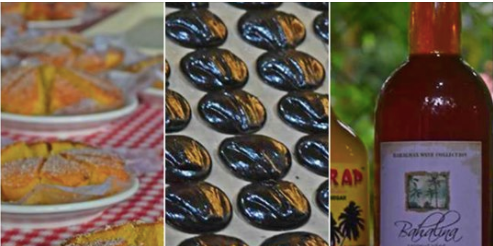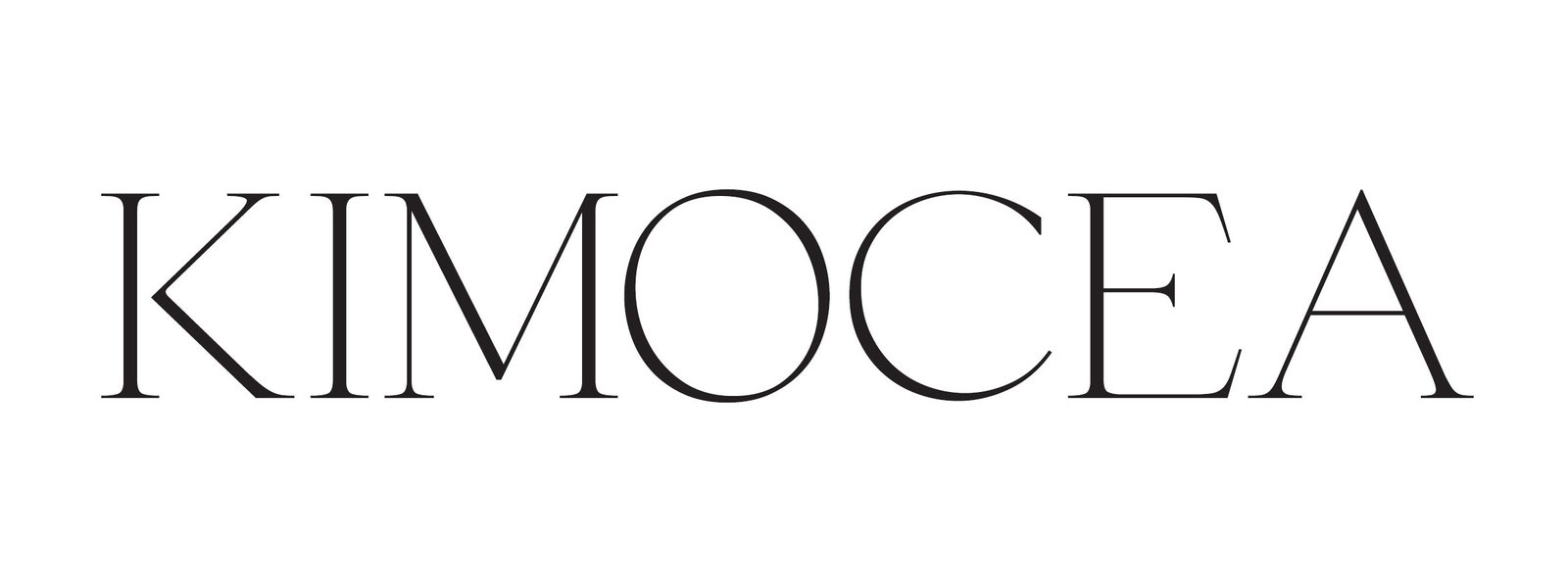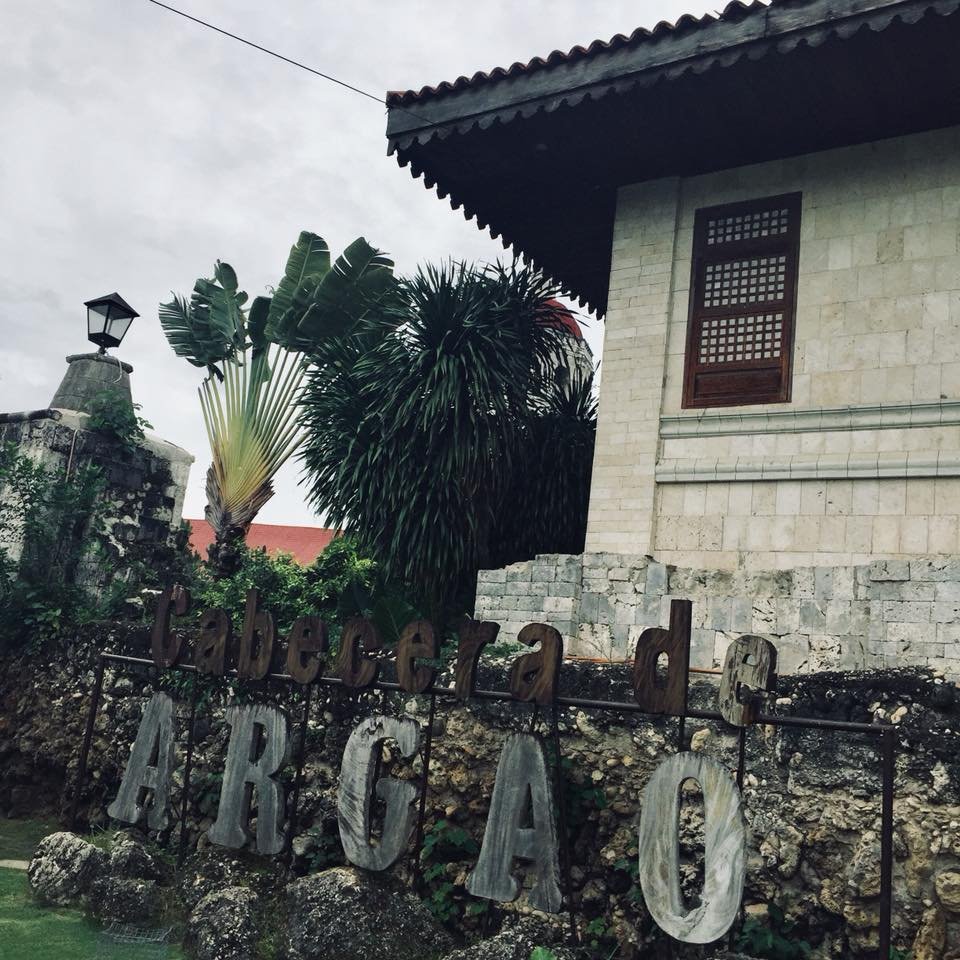Argao, Cebu: Torta, Tablea & Tuba.


The first time I visited this unassuming town at the South of Cebu, I was with my friends. We travelled long for approximately 2 hours just to reach this place from Cebu City, but then we’re all captivated by the interesting history and culture of this town when we arrived. The Cabecera de Argao is a testament itself.
And just recently, I came back. Aside from appreciating their history again, I came back for one thing — for food.
On my second visit, I had the chance to meet three of the country’s culinary geniuses: Nina Daza-Puyat (Author, TV Host and daughter of the iconic chef Nora Daza), Nancy Reyes-Lumen (Philippine’s Adobo Queen) and Ige Ramos (Editor-In-Chief of Rustan’s Supermarket Sansrival Magalogue, Influential Cookbook designer). They were there to judge a culinary competition in the town.
Known as one of Cebu’s culinary destinations, they were all so excited to try out the local dishes of the Argaonaons and in fact, their first morning was spent in the town’s palengke buying local produce, and even had their breakfast in the nearby karenderia trying out local Adobo, Tinola, Linat-an na Baboy, Humba, Ngohiong and some Kakanin.
After the stroll in the palengke, we’re about to get familiar with the culinary preparation of Argao’s Torta, Tablea and Tuba.
We first visited one of Argao’s popular Torta maker, Jessie Magallones, in her modest home where she also runs her Torta business. It’s interesting that Jessie’s technique in Torta making remained traditional; and this is why local folks and tourists prefer her tortas more than any other tortas in the town though equally delicious.
Jessie’s Torta
Jessie shared that her mother introduced Torta making to her and that her mother started cooking Torta in the 90’s on special occasions especially during town fiestas.
With a 2-week shelf life, Jessie’s Torta contain white sugar, melted butter, tuba, genuine flour, egg yolks and mantika sa baboy (pig’s oil).
This is how Jessie’s Tortas are made:
- In a basin, pour enough sugar
- Add fermented Tuba (Coconut Wine) and leave for 4 hours. This is to make tuba and yeast mix faster.
- Add big native chicken yolks that is half month prepared
- Add Evaporated Milk
- Add enough amount of flour using one cup then mix together until creating a creamy texture. Jessie shared that her cup was still from her mother.
- Add some Mantika sa Baboy (pork lard). They use a 1 year old pork lard from last town fiesta.
- Mix using hands and prepare
- Cook in Hurno (Clay Oven)
Guilang Tablea
In a small house-like building filled with tablea in Barangay Canbanua, Argao, we visited a 91 year old tablea maker named Nanay Miguela Higrimosa Lanotan, the owner of Guilang Tablea.
In a small house-like building filled with tablea in Barangay Canbanua, Argao, we visited tablea maker named Nanay Miguela Higrimosa Lanotan, the owner of Guilang Tablea and in her early 90’s.
Nanay Miguela shared that they started their tablea business when she and her husband got married in 1908, but officially started with tablea making in 1948. Nanay is proud to share to us that they only use pure cocoa which makes their process different from the others. Her grandson is now managing her tablea business but still oversees the operation.
Nanay Miguela’s Tablea making follows a process of cleaning with flowing water, roasting using traditional charcoal and local woodchips methods and grinding. Selection and fermentation that last for 5 to 6 days of beans are processed in Davao.
Bahal Max Sukarap
Our third and last stop is here in the Tuba place, Bahal Max Sukarap.
Tuba maker Randy Sedon warmly welcomed us in his tuba place, Bahal Max Sukarap in Barangay Talaytay, Argao. Tuba is a local wine made from fermented coconut sac. Randy proudly sells his Coconut Wine which is made from Sapot Coconut Sac, finely fermented for more than two years. He shares that if the coconut wine is still new, we call it tuba. A week later, the tuba now tastes somewhat sweet and we call it bahal. To add a bitter taste to the wine, they add tungog. After a year, we call it Tinuig. The coconut wine contains 12% to 14% alcohol content.
The tuba business in Argao started in the 1970’s, even before the Spaniards came in the locality. Due to the demand of Tuba, with Tuba as a main ingredient in Argao’s Torta, Randy decided to join the business.
Aside from Tuba, Randy also sells Mango Wine and Sukarap, a coconut vineger.
If you wish to try out Authentic Argaoanon tuba, come to Randy’s Bahal Max Sukarap and inside is a chill place called Chico Bar where you can stay and enjoy a glass of Tuba.
As much as our guests, Nina, Nancy and Ige had a great time, I was equally having a great time. I will definitely come back to Argao. Our stay was brief but we definitely had a wonderful time exploring and discovering the local taste of this town.

